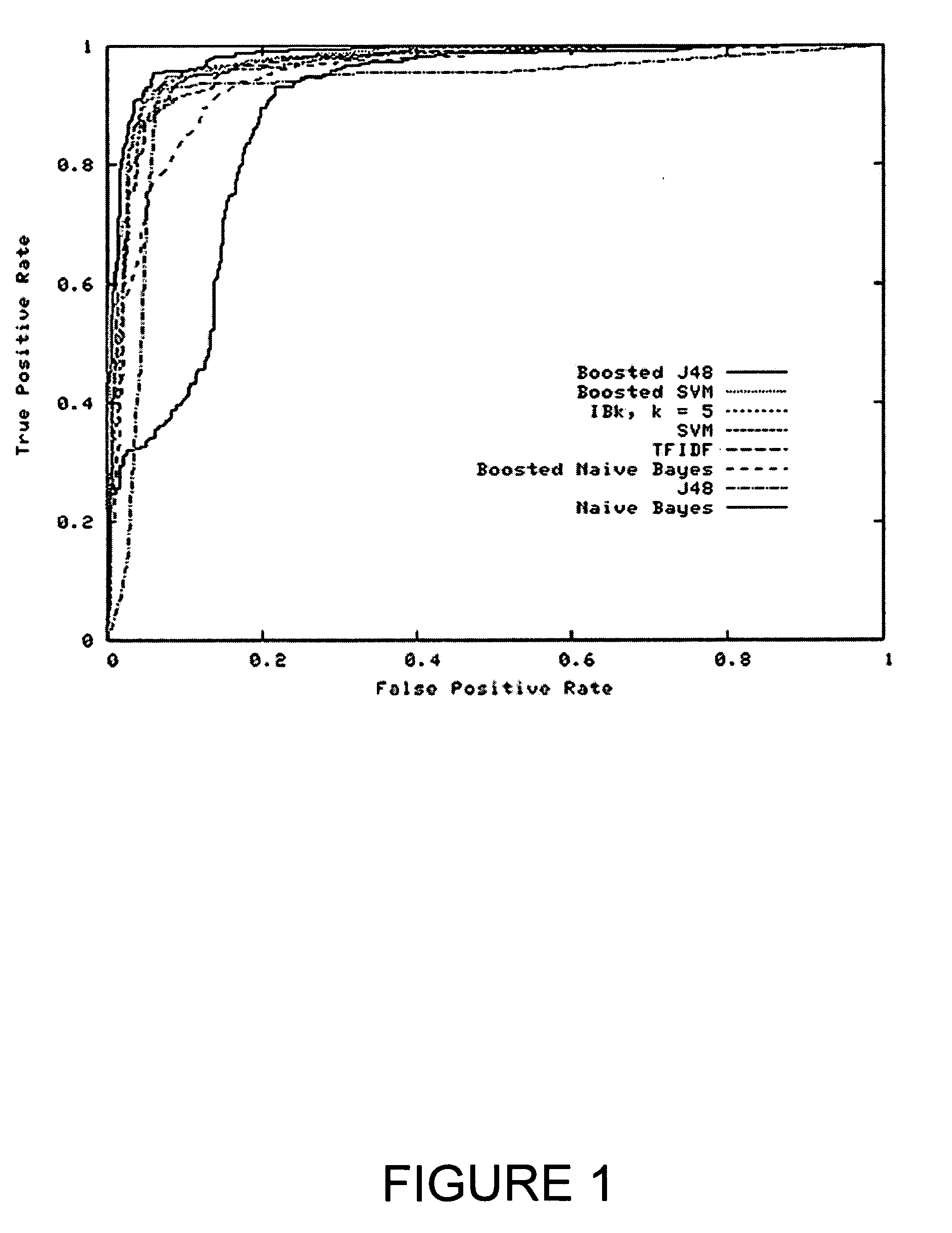System and method for detecting malicious executable code
- Summary
- Abstract
- Description
- Claims
- Application Information
AI Technical Summary
Benefits of technology
Problems solved by technology
Method used
Image
Examples
Embodiment Construction
[0004] Exemplary embodiments relate generally to software code and, more specifically, to systems and methods for detecting malicious executable software code.
[0005] 2. Description of Background and / or Related and / or Prior Art
[0006] Malicious code is “any code added, changed, or removed from a software system to intentionally cause harm or subvert the system's intended function”. Such software has been used to compromise computer systems, to destroy their information, and to render them useless. It has also been used to gather information, such as passwords and credit card numbers, and to distribute information, such as pornography, all without the knowledge of the system's users. As more novice users obtain sophisticated computers with high-speed connections to the Internet, the potential for further abuse is great.
[0007] Malicious executables generally fall into three categories based on their transport mechanism: viruses, worms, and Trojan horses. Viruses inject malicious code...
PUM
 Login to View More
Login to View More Abstract
Description
Claims
Application Information
 Login to View More
Login to View More - R&D
- Intellectual Property
- Life Sciences
- Materials
- Tech Scout
- Unparalleled Data Quality
- Higher Quality Content
- 60% Fewer Hallucinations
Browse by: Latest US Patents, China's latest patents, Technical Efficacy Thesaurus, Application Domain, Technology Topic, Popular Technical Reports.
© 2025 PatSnap. All rights reserved.Legal|Privacy policy|Modern Slavery Act Transparency Statement|Sitemap|About US| Contact US: help@patsnap.com



